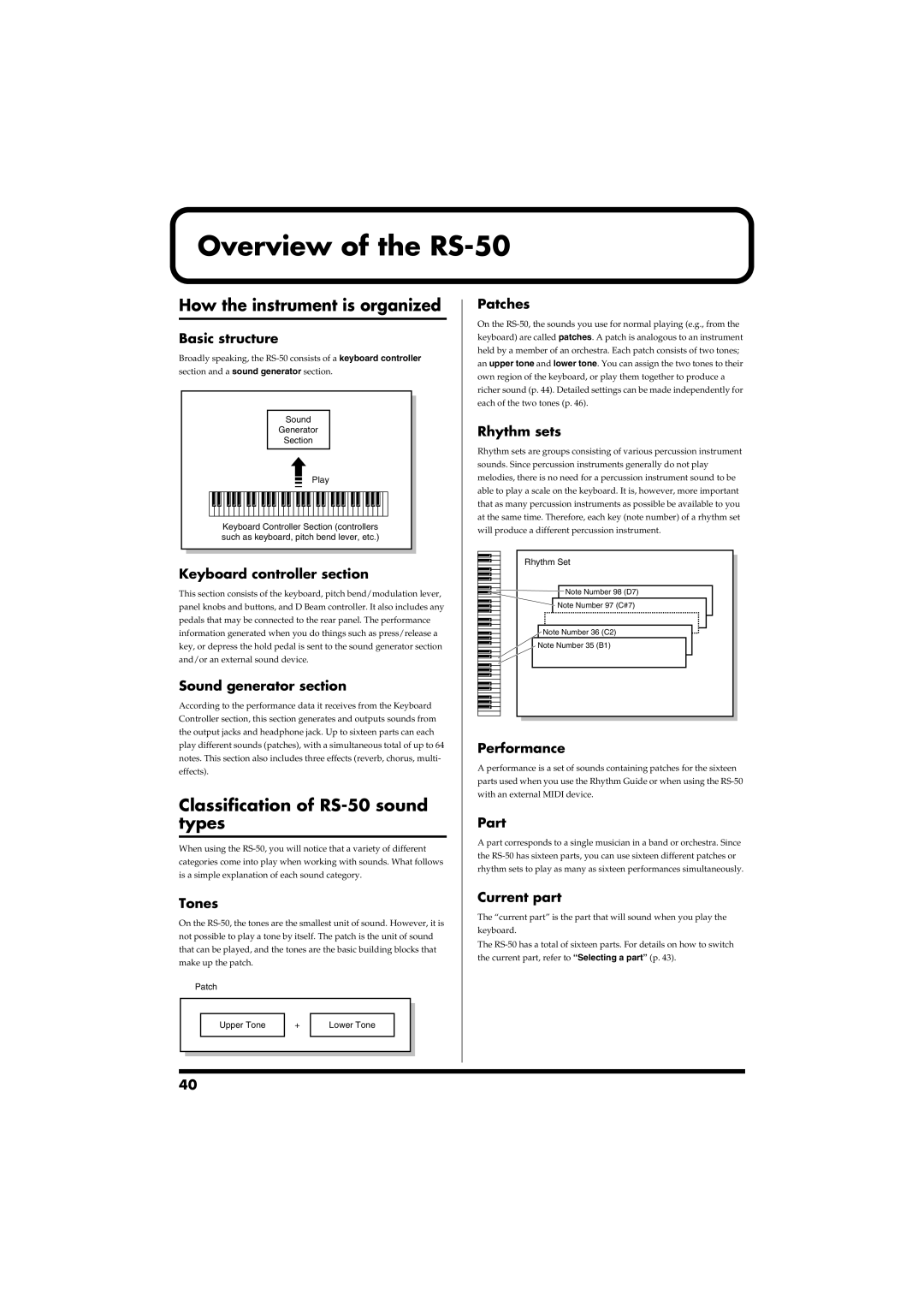
Overview of the RS-50
How the instrument is organized
Basic structure
Broadly speaking, the
section and a sound generator section.
|
Sound |
Generator |
Section |
Play |
Keyboard Controller Section (controllers |
such as keyboard, pitch bend lever, etc.) |
Keyboard controller section
This section consists of the keyboard, pitch bend/modulation lever, panel knobs and buttons, and D Beam controller. It also includes any pedals that may be connected to the rear panel. The performance information generated when you do things such as press/release a key, or depress the hold pedal is sent to the sound generator section and/or an external sound device.
Sound generator section
According to the performance data it receives from the Keyboard Controller section, this section generates and outputs sounds from the output jacks and headphone jack. Up to sixteen parts can each play different sounds (patches), with a simultaneous total of up to 64 notes. This section also includes three effects (reverb, chorus, multi- effects).
Classification of RS-50 sound types
When using the
Tones
On the
fig.r01-02.e
Patch
Patches
On the
Rhythm sets
Rhythm sets are groups consisting of various percussion instrument sounds. Since percussion instruments generally do not play melodies, there is no need for a percussion instrument sound to be able to play a scale on the keyboard. It is, however, more important that as many percussion instruments as possible be available to you at the same time. Therefore, each key (note number) of a rhythm set will produce a different percussion instrument.
fig.r01-04.e
Rhythm Set
Note Number 98 (D7)
Note Number 97 (C#7)
Note Number 36 (C2)
Note Number 35 (B1)
Rhythm sets
Performance
A performance is a set of sounds containing patches for the sixteen parts used when you use the Rhythm Guide or when using the
Part
A part corresponds to a single musician in a band or orchestra. Since the
Current part
The “current part” is the part that will sound when you play the keyboard.
The
Upper Tone
+
Lower Tone
40
